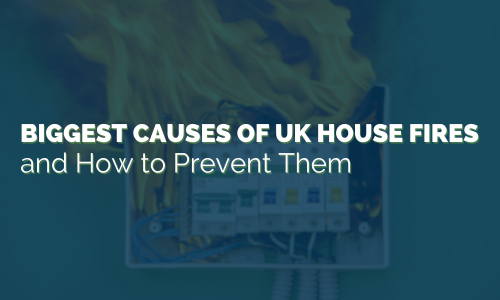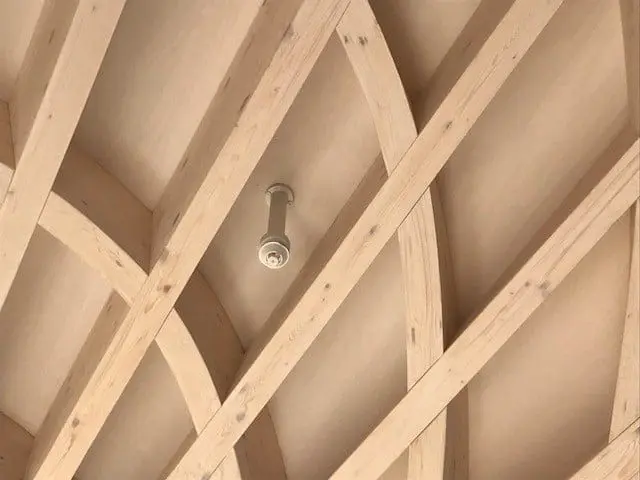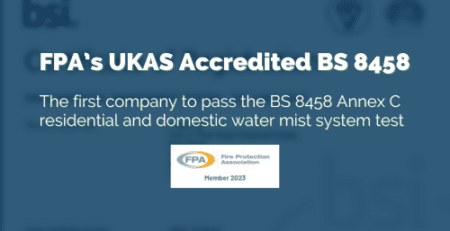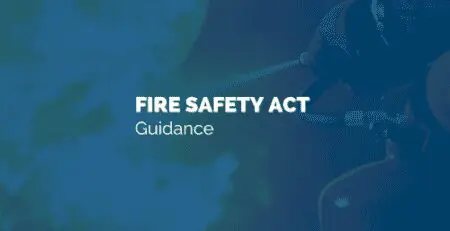The Biggest Causes of House Fires in the UK and How to Prevent Them
House fires can be devastating, both emotionally and financially. While the risk can never be completely eliminated, understanding the most common causes is an important step towards prevention.
In the UK, fire and rescue services attend thousands of domestic fires every year, many of which are entirely avoidable. In this article, we break down the top causes of house fires and offer practical tips to help keep homes and residents safe.
1. Cooking Accidents
Over half of all house fires in the UK start in the kitchen.
According to the Home Office Fire Statistics, cooking appliances account for 51% of accidental dwelling fires.
Key risks:
-
Leaving cooking unattended (especially with oil or fat)
-
Distractions such as phones or doorbells
-
Alcohol consumption while cooking
-
Build-up of grease in ovens or extractor fans
Prevention tips:
-
Never leave pans unattended.
-
Keep flammable items away from the hob.
-
Use timers and reminders to stay alert.
2. Electrical Appliances and Wiring
Electrical fires are another leading cause—often sparked by overloaded sockets, damaged wiring, or faulty white goods.
According to Electrical Safety First, 60 house fires are caused each week by faulty electrical appliances.
Common culprits:
-
Overloaded extension leads
-
Portable heaters
-
Tumble dryers, washing machines, and dishwashers
-
Fridges/freezers left running unattended for long periods
Prevention tips:
-
Don’t overload sockets or daisy-chain extension leads.
-
Regularly check appliances and wiring for wear or damage.
-
Register appliances so you’re notified of safety recalls at registermyappliance.org.uk.
A faulty freezer was the cause of a devastating fire for Andy & Sandra Hawe. You can find out more about their story here and why they chose to have an iMist system installed in their new home.
3. Smoking Materials
Smoking remains one of the leading causes of fatal house fires – and in one of our live fire activations, it was the trigger.
Data from the Home Office Fire Statistics shows that smoking materials were the most common cause of fatal fires, responsible for around 36% of fire-related deaths in dwellings.
High-risk scenarios:
-
Falling asleep while smoking
-
Smoking indoors or near soft furnishings
-
Improperly disposed cigarette ends
Prevention tips:
-
Never smoke in bed.
-
Use deep, sturdy ashtrays.
-
Always ensure cigarettes are fully extinguished.
4. Portable Heaters and Open Fires
Portable heaters and open fires can quickly ignite curtains, furniture, or clothes if placed too close.
According to London Fire Brigade, heaters should be kept at least 1 metre away from anything flammable.
Prevention tips:
-
Keep heaters at least 1 metre away from anything that can burn.
-
Never use them to dry clothes.
-
Turn off heaters when you leave the room.
5. Candles and Naked Flames
Candles are a well-known fire risk, especially during winter or festive periods. They cause hundreds of fires in UK homes every year.
According to Fire Kills, careless use of candles is a frequent cause of accidental fires.
Prevention tips:
-
Always place candles in holders on heat-resistant surfaces.
-
Keep them away from children and pets.
-
Never leave them burning unattended.
6. Children Playing with Fire
Young children playing with matches, lighters, or fireworks pose a serious risk—especially in unsupervised environments.
The NSPCC and fire services recommend storing ignition sources well out of sight and reach.
Prevention tips:
-
Keep all ignition sources away from children.
-
Teach fire safety from an early age.
-
Store matches and lighters in locked drawers or high cabinets.
7. Arson or Deliberate Fires
While less common than accidents, deliberate fires still account for a significant number of domestic incidents.
The National Fire Chiefs Council reports that arson accounts for 45% of all fires attended by fire and rescue services.
Prevention tips:
-
Keep wheelie bins away from doors and windows.
-
Secure external areas and install lighting or CCTV where appropriate.
Arson was also the cause of one of our live fire activations. Fortunately, the property had an iMist system installed, which suppressed the fire before it could spread, preventing serious damage and protecting lives.
Protecting Homes with Fire Suppression
While prevention is always the first line of defence, a fast-reacting fire suppression system can mean the difference between a minor incident and a major disaster.
At iMist, we specialise in high-pressure water mist systems that:
-
Activate rapidly in the event of fire
-
Use significantly less water than traditional sprinklers
-
Cause minimal water damage – using 80% less than traditional fire sprinklers
-
Are designed specifically for homes, flats, HMOs, and residential developments
House fires can happen in an instant, but with the right awareness and safety measures, many can be prevented. From the kitchen to the plug socket, staying vigilant can protect both property and lives.
If you’re developing or managing a domestic or residential property, it’s essential to consider how fire suppression can form part of your fire strategy, especially in high-occupancy or high-risk settings.
Want to learn more about water mist fire suppression?
Speak with our knowledgeable team about protecting your property today.











